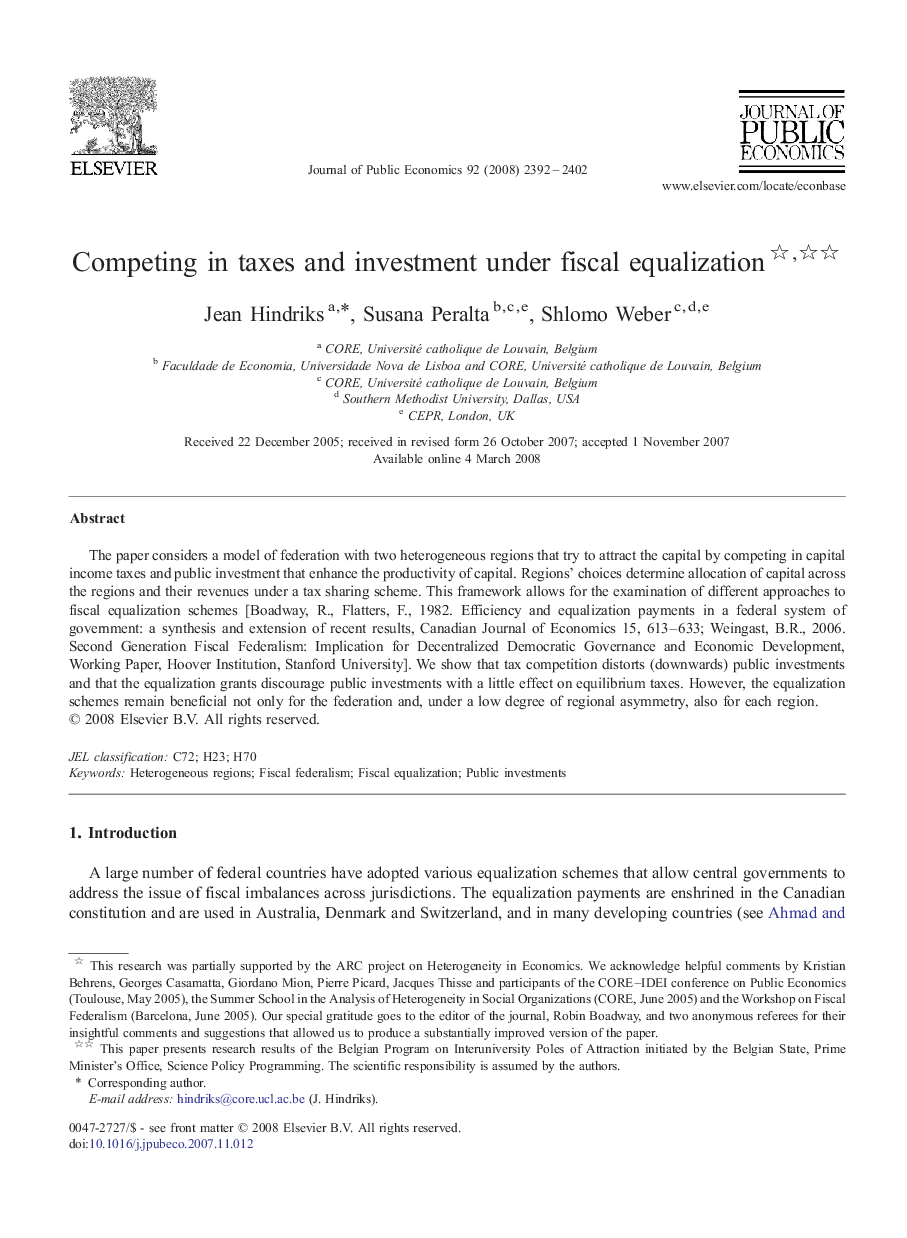| Article ID | Journal | Published Year | Pages | File Type |
|---|---|---|---|---|
| 970207 | Journal of Public Economics | 2008 | 11 Pages |
The paper considers a model of federation with two heterogeneous regions that try to attract the capital by competing in capital income taxes and public investment that enhance the productivity of capital. Regions' choices determine allocation of capital across the regions and their revenues under a tax sharing scheme. This framework allows for the examination of different approaches to fiscal equalization schemes [Boadway, R., Flatters, F., 1982. Efficiency and equalization payments in a federal system of government: a synthesis and extension of recent results, Canadian Journal of Economics 15, 613–633; Weingast, B.R., 2006. Second Generation Fiscal Federalism: Implication for Decentralized Democratic Governance and Economic Development, Working Paper, Hoover Institution, Stanford University]. We show that tax competition distorts (downwards) public investments and that the equalization grants discourage public investments with a little effect on equilibrium taxes. However, the equalization schemes remain beneficial not only for the federation and, under a low degree of regional asymmetry, also for each region.
